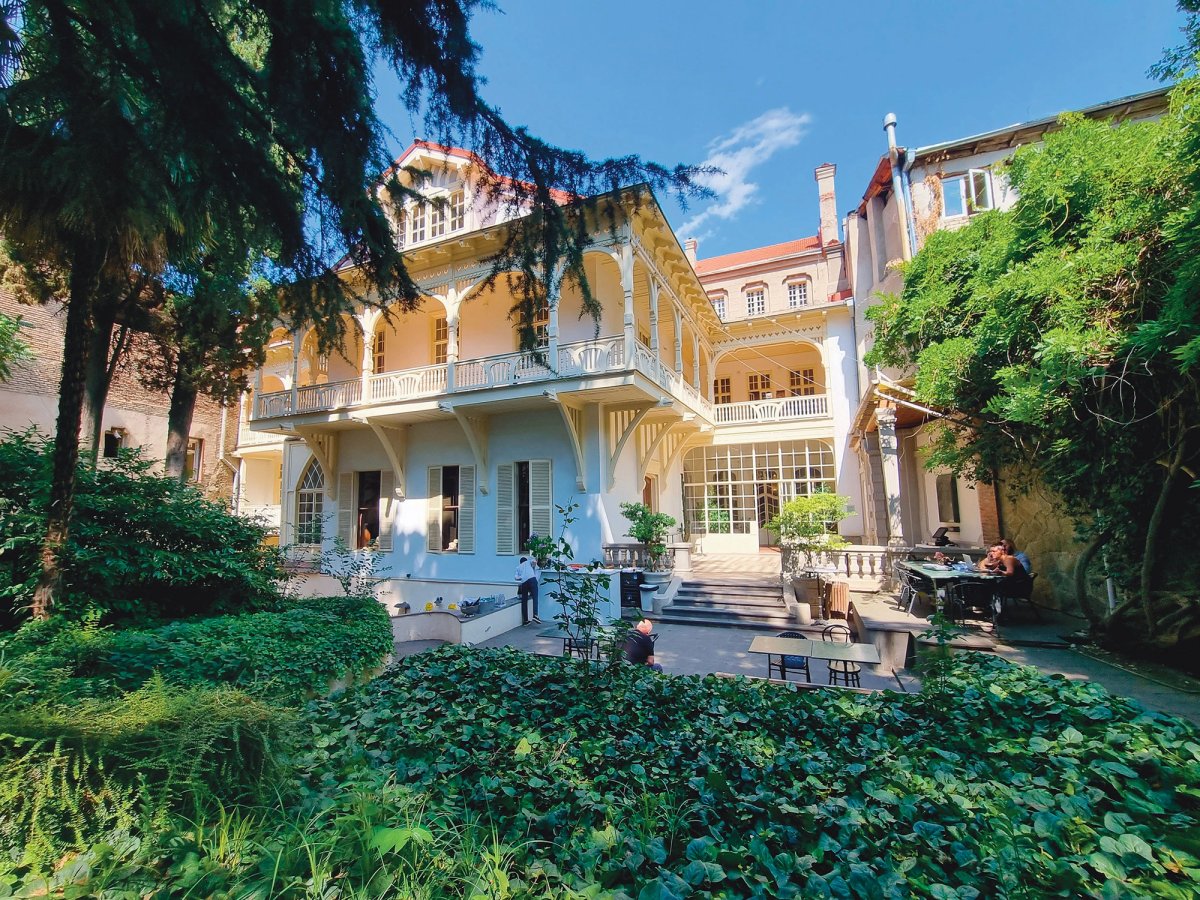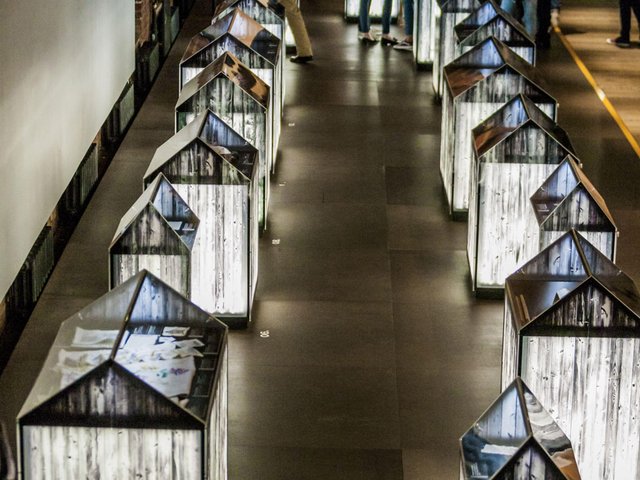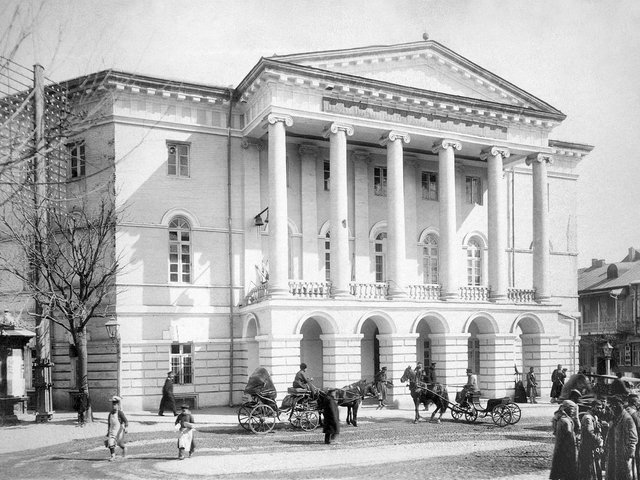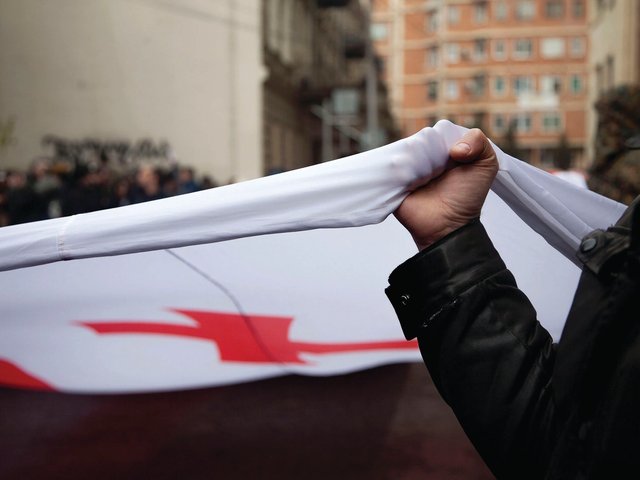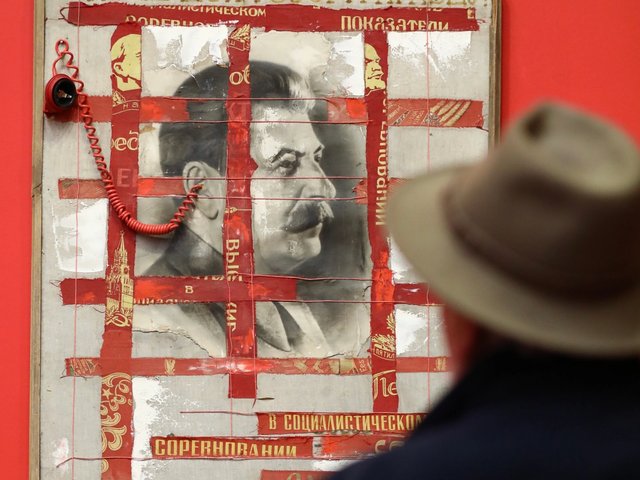A museum dedicated to writers killed or driven to suicide during Soviet-era purges opened in Tbilisi, Georgia, in March this year. It did so amid heightened tensions with neighbouring Russia and protests against a government that, critics claim, is intent on steering Georgia back into the Russian orbit.
Now, Georgia’s government has sacked the museum’s director amid sweeping attempts to control the cultural sector. For some Georgians, the actions echo the persecutions of Joseph Stalin’s time.
The Museum of Repressed Writers, in Tbilisi’s central Sololaki district, is now led by Ketevan Dumbadze, who, until taking up the role on 4 September, was a member of parliament for the ruling Georgian Dream party. The museum is located in the Writers’ House of Georgia, in an eclectic Art Nouveau mansion with an “Oriental” room and cantilevered balconies above the garden. It was built in 1905 by Davit Sarajishvili, a cognac producer.
After Russia’s Red Army invaded Georgia in 1921, and until independence was regained from the Soviet Union in 1991, the elegant white building at 13 Ivane Machabeli Street (named after Shakespeare’s first Georgian translator) served as the Soviet republic’s writers’ union. It became the site of show trials and vitriolic denunciations that led to the deaths of more than 200 writers—many of them shot during the Stalinist Great Terror of 1937. Others died after being deported to the Gulag—as did many of their families.
It’s a small part of fighting disinformation—if you don’t know your past, you’re doomed to make the same mistakesNatasha Lomouri, ex-director, Writers’ House
The museum was conceived ten years ago as a “memorial to the writers”, says Natasha Lomouri, who, until last month, was the director of both the museum and the Writers’ House. Among the tragic heroes it commemorates is Paolo Iashvili, the subject of the museum’s first temporary exhibition. An art student in Paris, and leader of the Blue Horn symbolist poets of the 1910s and 20s, Iashvili shot himself in the house in July 1937 as a union meeting downstairs debated his expulsion. He faced arrest and torture to betray his fellow writers by the Cheka secret police, whose chief, Lavrentiy Beria, lived two doors down from the union.
Burdened by forbidden knowledge
Archil Kikodze, a Georgian novelist, saw the new museum as breaking a silence. “All who survived the terror were forever scarred,” he wrote in an essay published for the opening. Survivors were “burdened by forbidden knowledge that could never be shared”.
“So many are unknown names,” says Lomouri, who became director of the Writers’ House in 2011. Despite mythology about Iashvili’s suicide, she learned only this year from the poet’s grandson that he had killed himself in what became her office. “We made a memorial plaque,” she says.
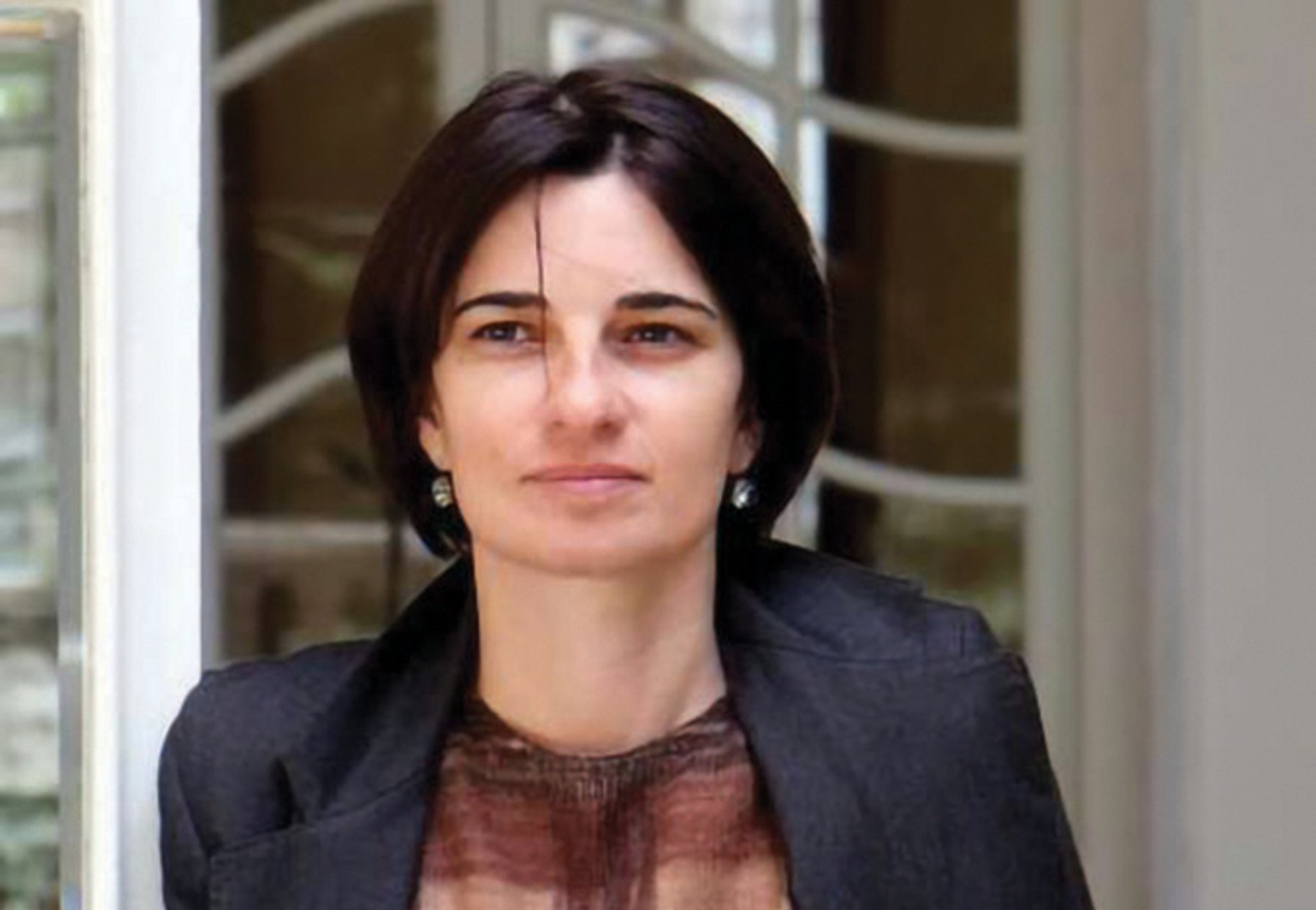
Natasha Lomouri, who last month lost her job as director of the museum Courtesy of Natasha Lomouri
Texts for the museum were written with the Soviet Past Research Laboratory (SovLab), a historians’ collective that topped a list of Georgian NGOs denounced by the Russian foreign ministry in October 2021 for “faking history”. It is a “tragedy of our educational system that we’re not taught about this period in schools”, Lomouri says. “It’s a small part of fighting misinformation—if you don’t know your past, you’re doomed to make the same mistakes.”
The museum’s opening in the spring coincided with demonstrations against a draft “foreign agent” law that critics said replicated 2012 legislation used in Russia to stifle press and artistic freedom—and made it less likely that Georgia would win EU-candidate status in Brussels this coming December. The ferocity of the protests led the government to withdraw the bill, which would have obliged media outlets and NGOs receiving more than a fifth of funds from abroad to register as “agents of foreign influence”.
Many writers see such language as mimicking the Stalinist charge sheet that doomed so many Georgians memorialised in the museum, including ethnic Armenians, Abkhazians and Ossetians. The Blue Horns—close friends of the poet Boris Pasternak—were incriminated partly for hosting foreign writers. After being visited by André Gide, poet and friend of Iashvili, Titsian Tabidze confessed under torture to spying as an agent of France. He was shot and dumped in an unknown grave (for years, his family and Pasternak believed him to be in the Gulag). The novelist Mikheil Javakhishvili was tortured to death as an “enemy of the people, a spy and a saboteur”.
“The same wording used in the 1930s we hear today,” Lomouri says, pointing out that the museum was financed by foreign sources, including the US embassy in Georgia and Unesco’s Tbilisi World Book Capital 2021 programme. A Writers’ House statement said the draft “foreign agent” law contradicted the “constitutional course of… Euro[pean]-integration”, adding, “We would never imagine that these historical records would resemble modern-day Georgia.”
A museum that celebrates acts of resistance
In the permanent exhibition of the museum that Lomouri formerly oversaw, in a darkened room, visitors circle four quadrants charting waves of purges between 1921 and 1960 (official “rehabilitations” followed Stalin’s death in 1953). During what is now termed the Soviet occupation, writers were told that opposition would be met with the “language of bullets”. They were to fuel Stalin’s cult of personality: “comfort for collaboration, repression for resistance”. Drawers open to reveal copies of personal letters and execution orders. “Everyone’s name is here,” Lomouri says. “It’s like a monument, because in some cases, we don’t have graves.”
The terror was punctuated by acts of resistance. The critic and sculptor Vakhtang Kotetishvili was spotted in prison with both knees broken, having apparently punched his interrogator. Iashvili wrote in a heart-wrenching farewell letter to his daughter Medea, “You will grow up… and realise that my death was a better way.”
The main designers of the exhibition space are Mariam Natroshvili and Detu Jincharadze, the artists behind the Georgian pavilion at last year’s Venice Biennale. “Today’s Georgia is a result of mistakes made in the past that we’re continuing to repeat, because we have never had the time to reflect,” Natroshvili told The Art Newspaper as the museum was installed. “We don’t have memorials or understanding of this bloody period. We need to give names to the victims.”
Georgia has no adequate memorial to Soviet victims, the most powerful commemorations being films such as Tengiz Abuladze’s masterpiece Repentance (1987), whose black-shirted tyrant is chillingly modelled on Beria. Nostalgia in some quarters for the Georgian-born Stalin—whose museum in his hometown of Gori remains, in some respects, a shrine—is another spur. Gori was the first destination chosen for a travelling version of the Museum of Repressed Writers this year.
The language of repression
Texts in the museum and an audio guide are in Georgian and English amid surging resentment, particularly among younger Georgians, of the region’s former lingua franca, Russian. “Reading documents of execution, signed with ticks, I realised the language of this cold bureaucracy of repression was Russian,” Natroshvili says. “We’re in a permanent war because Russia is our neighbour.”
The Museum of Repressed Writers was due to open last year, on the 130th anniversary of Iashvili’s birth, but was postponed, Lomouri says, while the culture minister signed off on it—a delay symptomatic of tensions since 2018 between the country’s leading literary institution and the government. The eighth Tbilisi International Festival of Literature took place at the Writers’ House in June without public funding for the second year running. The Litera Prize, one of Georgia’s two top literary awards, has not been awarded for two years after losing state funding.
Lomouri, who views these budgetary pressures as attempts to control cultural activity and curb free expression, was sacked by the culture minister in August, three months before her term as Writers’ House director was up. More than 100 writers and publishers have signed a joint statement protesting the appointment of Dumbadze as her successor, and noting that Dumbadze voted for the “foreign agent” bill.
The museum, Lomouri says, is the “story of writers and power”. It is a sobering tale, and it has renewed urgency today.


